PROTECT YOUR DNA WITH QUANTUM TECHNOLOGY
Orgo-Life the new way to the future Advertising by AdpathwayProgress on the climate crisis is often slow and frustrating. But sometimes, when people are given an opportunity, change can come in a rush.
On 1 July, the government introduced a subsidy scheme for small battery systems that reduces the cost for most households by about $4,000, or 30%. The response has been rapid. More than 1,000 batteries are being installed across the country each weekday.
It has boosted the total energy storage capacity in homes across the country by about 25% in just two months. The take-up has been strongest in regional and outer suburban areas.
The man responsible for the policy, the climate change and energy minister, Chris Bowen, is keen to point out this success – not just the pace of installations, but the distribution, which suggests the scheme is not the welfare program for the inner-city wealthy that some critics claimed it would be. The initial result, he says, is “sort of at the extreme end of how I thought it might go”.
“I thought it would be popular. Without going into cabinet conversations, I told the colleagues that this will be an outer suburban story,” he says.
His confidence was partly based on Australia’s experience in putting up more than 4m rooftop solar systems, at least as much in the suburbs as in inner urban areas.
Sitting in his electorate office in Fairfield West, western Sydney, Bowen argues this is consistent with his experience of how his constituents think about climate change and energy.
His seat of McMahon is more than 30km from the Sydney CBD and includes his childhood home in Smithfield and the Fairfield council offices where he served as mayor while in his mid-20s. More than 70% of people have at least one parent who was born overseas. For two-thirds, it is both parents.
About 60% speak a language other than English at home. A greater proportion than the national average identify as religious – Catholic, mostly, but also Muslim. Fewer than average are in professional jobs. More are in clerical work, operating machinery or drive for living.
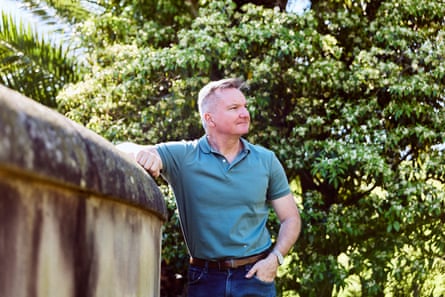
Asked what feedback he gets locally on climate and energy, Bowen says it is “not front of mind for most people here, but it is on the mind”.
“It’s a misconception that somehow climate change is an obsession of inner-city middle class elites. That’s just not the case. People know that climate change is real, particularly people who’ve got family in the Pacific, Indonesia, or Nepal or Bangladesh or India. A lot of people want to talk about energy prices. But they also get [climate] out here.”
‘The moral argument is done’
The success of the battery program was not only welcome, but necessary. It was the only new climate policy Labor took to the May federal election. There have been challenges in the rollout of large-scale renewable energy and ministers in other portfolios continue to approve major fossil fuel developments. Until recently, national emissions have been stubbornly refusing to go down.
Several significant commitments were due to land before Australians voted but were delayed – ostensibly to allow more time for consideration, but almost certainly also to avoid the risk of a Peter Dutton-led scare campaign. The wait for those commitments should end next week, when the government plans to release a raft of reports and commitments before Anthony Albanese, Bowen and other ministers fly to New York for the annual UN general assembly.
They will include a long-awaited national climate risk assessment that, according to people familiar with it, will lay out an “intense and scary” story of the environmental and economic damage ahead. There will be economic modelling, a plan for how the government thinks the country can reach net zero emissions by mid-century, and separate reports on what can be done in six different areas across the economy.
The headline-grabber will be an emissions reduction target for 2035. Likely to be expressed as a target range, it risks being like so many climate goals before it: an opaque set of numbers that barely registers for many people. But it will say a lot about how much Albanese will prioritise dealing with the climate crisis for the rest of his prime ministership, and set a framework for how much new policy will be needed over the next decade.
It will also be a defining moment for Bowen. Earlier this year he became Australia’s longest serving climate change minister. He will become the most experienced energy minister if he stays in the role until the next election in 2028. The 52-year-old says climate and energy is “the most important job I’ve ever done”, ranking it above stints in immigration and Treasury, the latter mostly in opposition.
“I wouldn’t swap it for any other job in government,” he says. “This is the key to our prosperity, both on the positive [if we get it right] and the negative impacts if we get it wrong. You know, when I was Treasurer [briefly under Kevin Rudd in 2013] … I’m flat out remembering what the deficit was, let alone anyone else remembering. But I think what I’m doing now will be remembered.”
Bowen’s background is in economics, which he says is key to how he approaches the portfolio, and why Albanese offered it to him in 2021 when Labor was in opposition. “Albo rang me and said, ‘I think we need an economist in this job. We keep winning the moral argument for action on climate change and losing the economic argument’. And I think he was right,” Bowen says.
“I think the moral argument is done apart from the 10% of Australians who deny climate change. I’m not going to convince them. I can be moderately persuasive on a good day perhaps, but I’m not going to persuade a climate change denier … So I set out to win the economic argument.”
Bowen says that includes “knocking away junk economics around nuclear and net zero that we hear from the opposition”.
This goes to one of the criticisms made of Labor on climate since its thumping election win – that it is too interested in mocking its vanquished opponents and not enough on accelerating its response to the climate crisis.
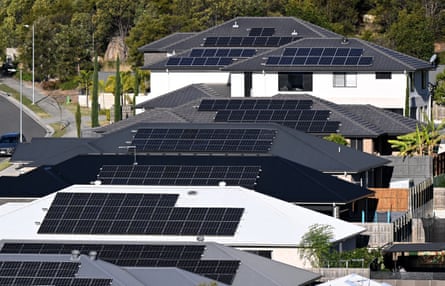
Critics highlight the party’s decision to dedicate parliamentary time to debate on a Barnaby Joyce bill to repeal climate change legislation that has no chance of going anywhere. Bowen argues the Coalition’s position still matters because it continues to create policy uncertainty, even after it was thumped at the election. “They are still the alternative government of Australia, and business hates the uncertainty,” he says.
He says people should not ignore where the country would be if Dutton had become prime minister. “They planned to undo almost everything I had done,” he says.
The sticking points
Bowen says he will have succeeded in his job if, by the time he finishes, he has overseen “irreversible change”. “[The goal is] that by the time I eventually finish here our journey to being a renewable energy superpower is so locked in that you can’t undo it – a bit like with Medicare or superannuation,” he says.
The minister is speaking on the day the board of the Climate Change Authority, a government agency chaired by the former NSW Liberal treasurer Matt Kean, is finalising its target advice after consulting on a cut of between 65% and 75% below 2005 levels. It has been agreed there will be no nods or winks about his preferred range before the cabinet makes a decision next week. But that doesn’t mean the subject is completely off limits.
The government has been aggressively lobbied, particularly by business groups (variously arguing for little action or as much as a 75% target), but also by the environmentally focused end of Labor’s membership (at least 70%).
after newsletter promotion
Scientists, climate organisations and an ex-UN climate chief have argued Australia must go further if the country is to play its part in trying to limit global heating to 1.5C above preindustrial levels – a commitment made in the 2015 Paris agreement – and seize the economic opportunities of new green industries. Their assessments have ranged from at least a 75% cut to reaching net zero by 2035, a goal backed by the Greens.
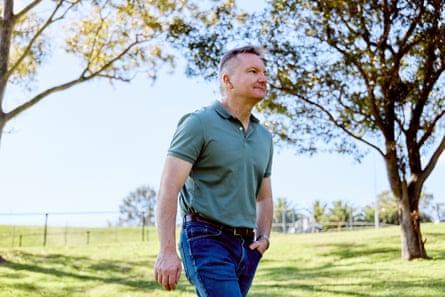
Bowen says he agrees the target needs to be based on science. “The Climate Change Authority has got to take into account the science, and I’ve got to take into account the Climate Change Authority advice. We wrote that into the law,” he says.
But he disagrees on the numbers. He points to a 2021 report of the world’s leading climate science authority, the Intergovernmental Panel on Climate Change (IPCC). It suggested global emissions in 2035 should be 68% lower than they were for the world to hit the 1.5C target.
“That doesn’t mean the target is going to be 68%. But it does frame the conversation,” Bowen says. “You can’t say, well, the science demands 100% when the IPCC says 68%. You can have a conversation about what 68% means for Australia. But the fact is, the IPCC says 68% for 1.5C.”
Scientists say two things in response: first, that wealthy countries such as Australia that have benefited from fossil fuel-powered development need to make much deeper cuts than the global average; and second, that emissions have been higher over the past five years than the IPCC calculation assumed. It suggests greater reductions are required now.
Few people believe the 1.5C goal is still achievable without using technology to suck substantial amounts of CO2 later this century. Some analyses say heating is virtually at this level now, and the second rise of Donald Trump, and wars in Europe and the Middle East, have stuck spanners in the works.
Australia’s 2035 target will not be set based on an assessment of science alone. The Climate Change Authority is also required to consider the international landscape, the economics, technological developments and what is socially deliverable.
Wherever the government lands, it will require new policies in addition to existing measures to underwrite large-scale solar, wind and batteries, limit total pollution from industrial sites and require auto dealers to sell a cleaner mix of cars. Officials last year estimated they would only get the country to about a 51% cut by 2035.
Where might the further cuts come from? Given the success with rooftop solar and batteries, Bowen says there is more to be done to help people act at home. The lesson, he says, is if you give people “a little bit of a nudge” with the right policy settings, “they’ll respond very, very strongly”.
That could mean more support for household electrification – a step that would ultimately cut gas use – and “vehicle-to-grid charging” technology to allow people to use their electric car as a two-way battery that can sell energy to the grid, not just take it.
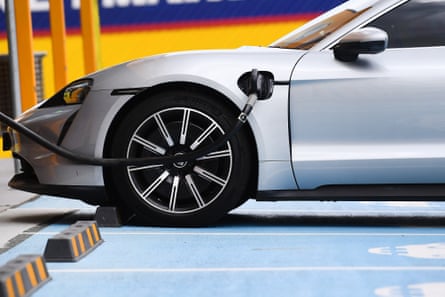
Bowen says there is “more work to do” in transport, which is projected to soon be Australia’s largest emitting sector, noting fossil fuel-powered cars sold today are likely to have an average life of 17 years. Aviation is more difficult again, with clean fuels slow to develop and electric planes only considered a boutique technology.
He does not believe it is the government role to say people should fly less, even as pollution from air travel continues to increase. “The answer to climate change is not for people never to go overseas again to see their families, or to travel. That is not a sustainable answer,” he says.
He says cutting emissions from agriculture will also be “hard work”, with research and development needed “to make technologies more commercial so they make sense for farmers”. The safeguard mechanism, applied to more than 200 of the country’s biggest polluting facilities, is one area where more rapid change may be possible. A review of the scheme is due next year.
The rise of EVs
Asked what he is most worried about, Bowen is initially dismissive – “I don’t have the luxury of prioritising my room full of worries” – before highlighting challenges with supply chains as a relatively understood roadblock to a fast clean energy transition. He gives the example of the $5bn Marinus Link subsea electricity cable between Tasmania and Victoria, which the government last week confirmed would go ahead.
“If we had missed the next order for a cable because we hadn’t had our financial arrangements sorted [there would have been] a five-year delay,” Bowen says.
Asked about cutting edge technology that excites him, he names Australian research into “green gravity” – generating renewable energy by dropping weights down disused mine shafts – and future roofs that “will be just one big solar panel”. But more than anything, he nominates the rise of EVs.
“I don’t think people realise just how quickly the market is changing, and how much choice people now have and will have. I’m not talking in five years’ time. I’m talking in the next 12 months,” he says. “There will be models available that you’ve never heard of, that are cheap, that are expensive, that are short range, that are long range, that are fancy, that are practical. You take your pick. You be you, and there’ll be an EV for you. That excites me a lot.”
More immediately, he has to deal with the target. He has promised a goal that is ambitious, but achievable – but those words mean different things to different people. How will he convince the public the government has landed in the right place?
“Just with the facts,” he says.
“But it will be a big communications task.”


 5 hours ago
5
5 hours ago
5



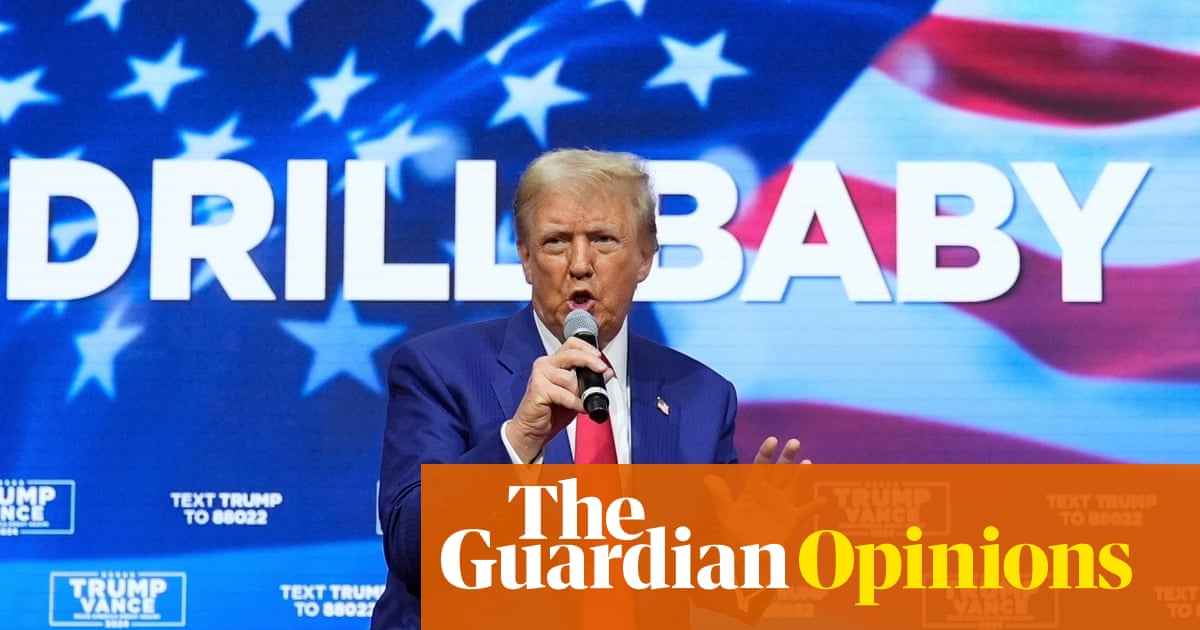
















 English (US) ·
English (US) ·  French (CA) ·
French (CA) ·